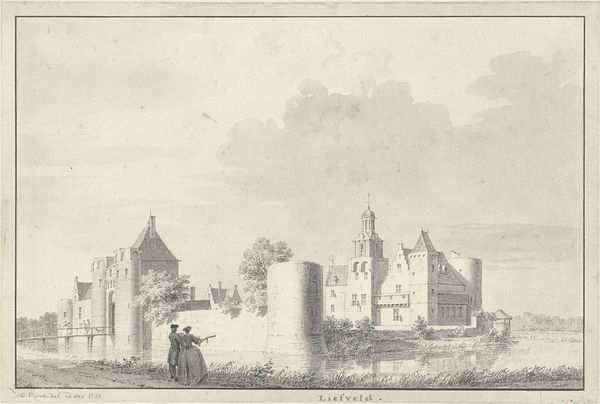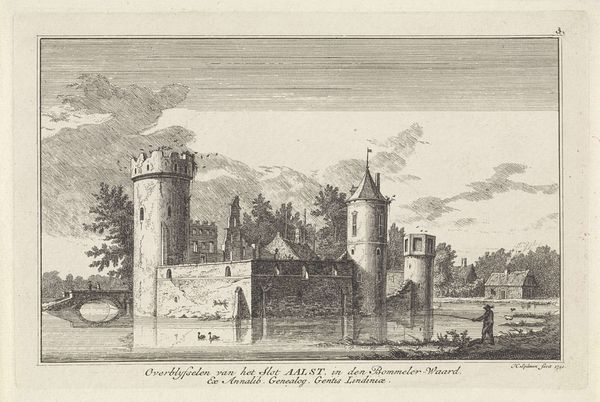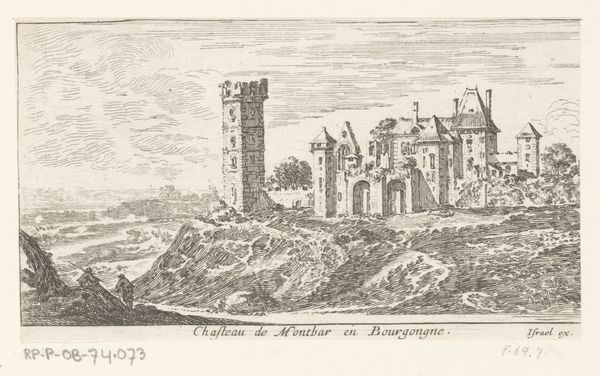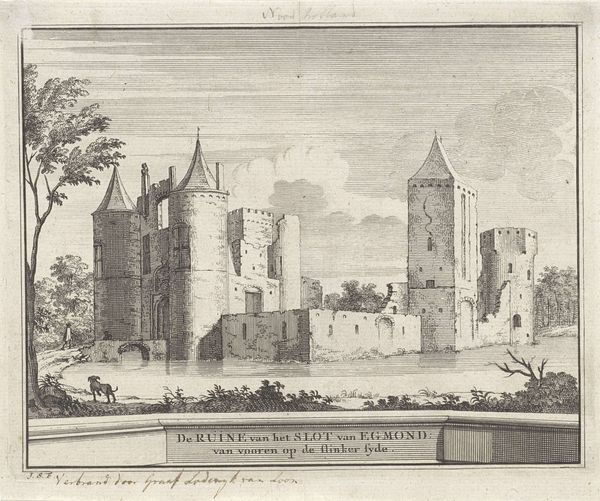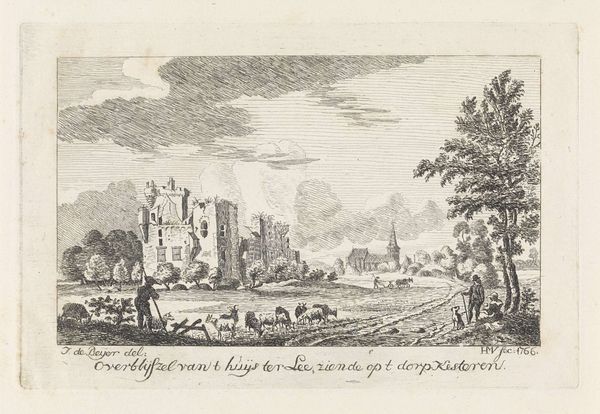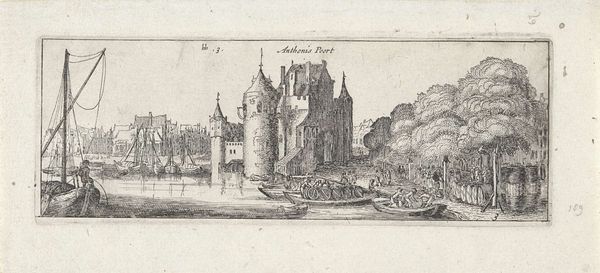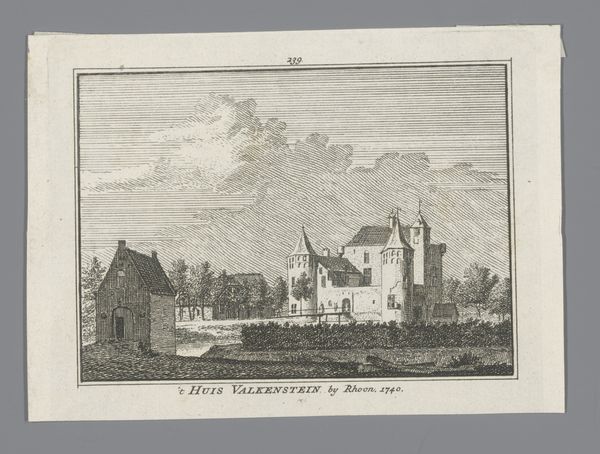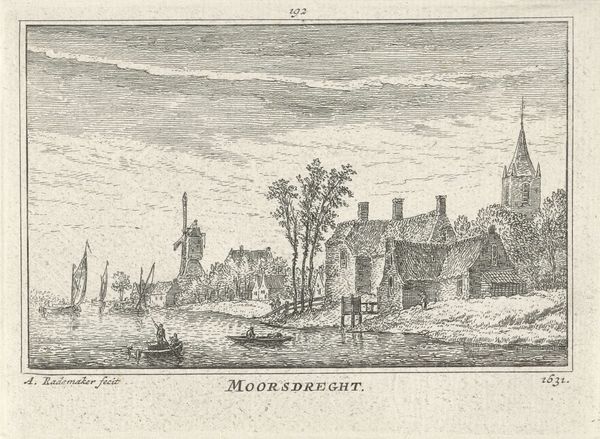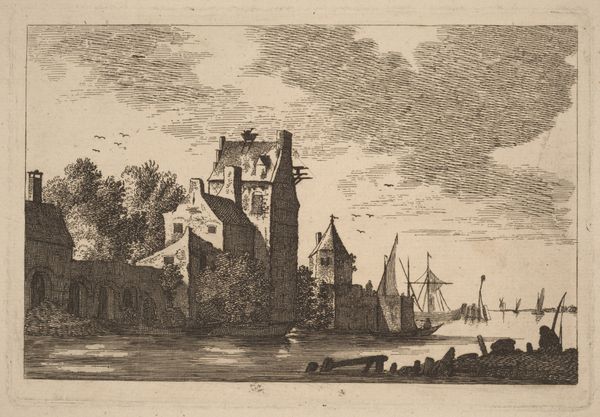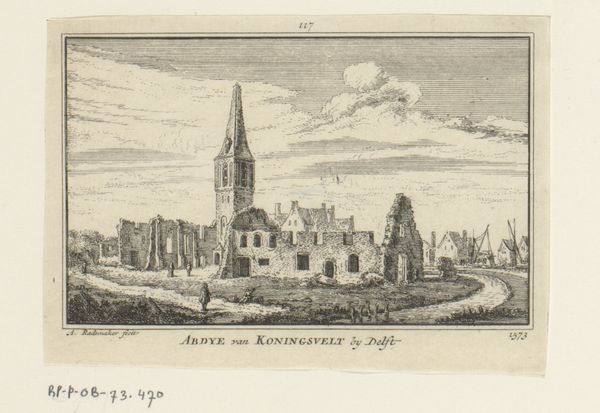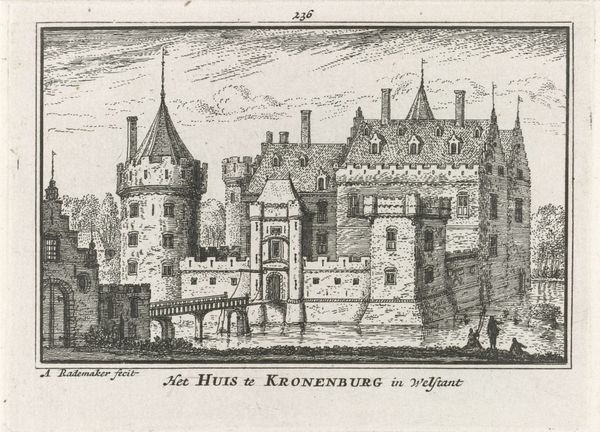
print, engraving
#
baroque
#
dutch-golden-age
# print
#
landscape
#
cityscape
#
engraving
Dimensions: height 80 mm, width 115 mm
Copyright: Rijks Museum: Open Domain
Abraham Rademaker created this print of Kasteel Culemborg in the Netherlands, likely in the early 18th century, using etching and engraving techniques. Rademaker's work, part of a broader trend in Dutch Golden Age art, reflects a society grappling with its identity through depictions of its landscape and architecture. This print showcases the castle, not as a symbol of feudal power, but as a feature of the Dutch landscape. Consider the geographical and economic context: the Netherlands, a nation built on trade and water management, was keen to map and document its infrastructure. The detailed rendering and the conscious placing of the castle within the composition invites a deeper look into the cultural values of the time. By studying these prints alongside historical records, we gain insights into how the Dutch perceived their world and how they wished to represent it.
Comments
No comments
Be the first to comment and join the conversation on the ultimate creative platform.
